
The Moche Route
Written by:Valencia Travel
Last Update: 2025-01-21
The region of Northern Peru is relatively undiscovered for international tourism with mainly just national travellers visiting each year. The north of Peru as well as being the home to impressive, untouched beaches, incredible sea food and all year-round hot weather, attracts many local people to escape the big city of Lima. However the north of Peru also has a fascinating history and was the birthplace of a number of ancient pre-Inca civilisations such as Sicán, the Lambayeque, and the Mochica, characterized by their gold craftsmanship, ceramics, and the irrigation systems that allowed them to expand their agricultural borders. The region between La Libertad and Lambayeque, in the middle of the vast desert and towering Pacific waves, was the birthplace of three great ancient cultures. The Moche Route is a system of huacas (ruins), dating from 100 to 900 A.D. invites you to explore the region’s traditions, religions, and historical social hierarchy. Museums, archaeological sites, and nature parks complement this route along which tourists and locals can relive their ancient past in the middle of the desert sands.
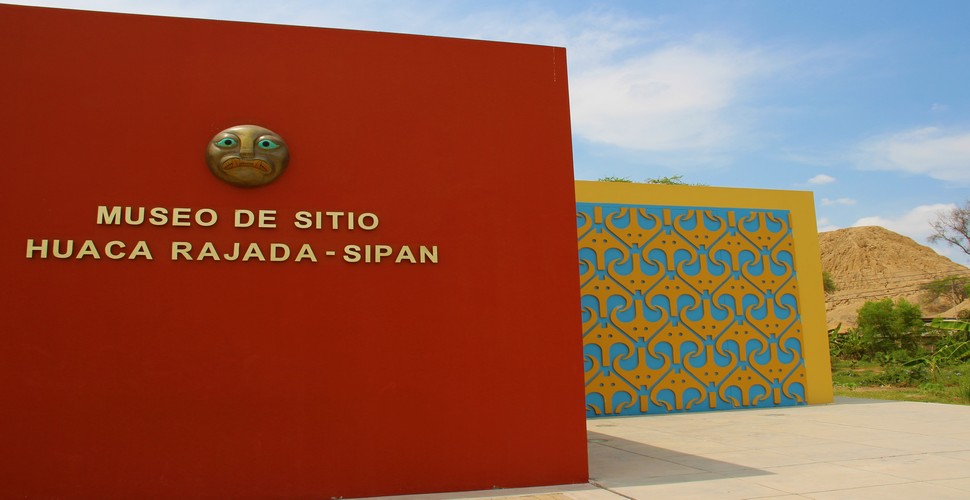
Sr Sipan Museum
Unearthing History:
The Valencia Travel one day tour explores the Moche route and begins in Chiclayo, with a visit to the Huaca Rajada which was discovered in 1987 and is found in Lambayeque, about 40 km from Chiclayo. The tomb of the Moche king offers clues about the funeral rituals of the great Lord of Sipán. Although this is the main attraction, the complex includes at least sixteen other tombs, the most recent one discovered in 2010. It contains the remains of a young man who, as the artifacts found around him and his dress indicate, belonged to the Moche elite. The discovery of these tombs was a breakthrough in understanding the culture of Chiclayo, allowing us to more fully comprehend this great society.
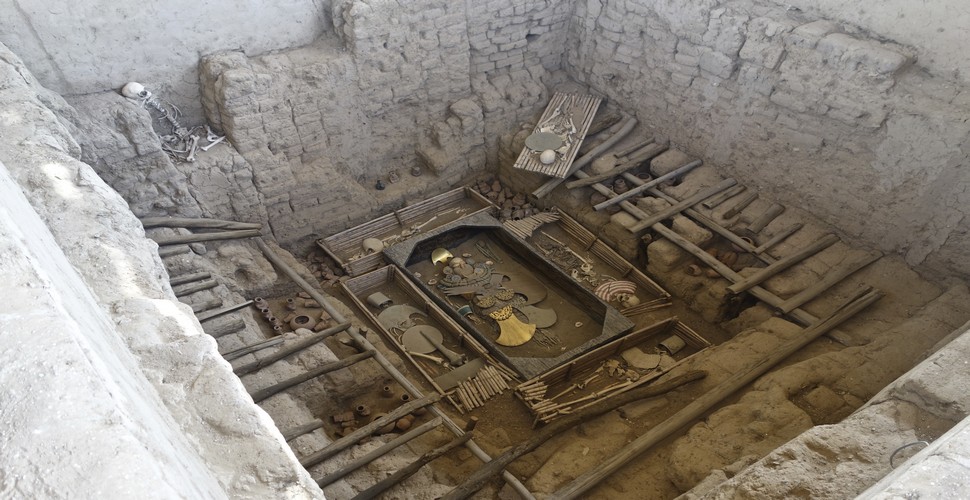
Sr Sipan´s tomb
The Museum of the Royal Tombs of Sipán
To understand the Moche culture, it’s important to know that their burials took place in inverted pyramids; the higher an individual’s social status, the more deeply they were buried. The museum tells the story of the archaeologist Walter Alva, who led the excavation and help form the museum. As you descend floor by floor, visitors experience a recreation of the excavation process. The museum is adorned with six hundred pieces of gold, silver, and precious stones that were found next to the Lord of Sipán, a ruler, priest and warrior who was buried in the company of seven guards, three women, a child, two llamas, and a dog.
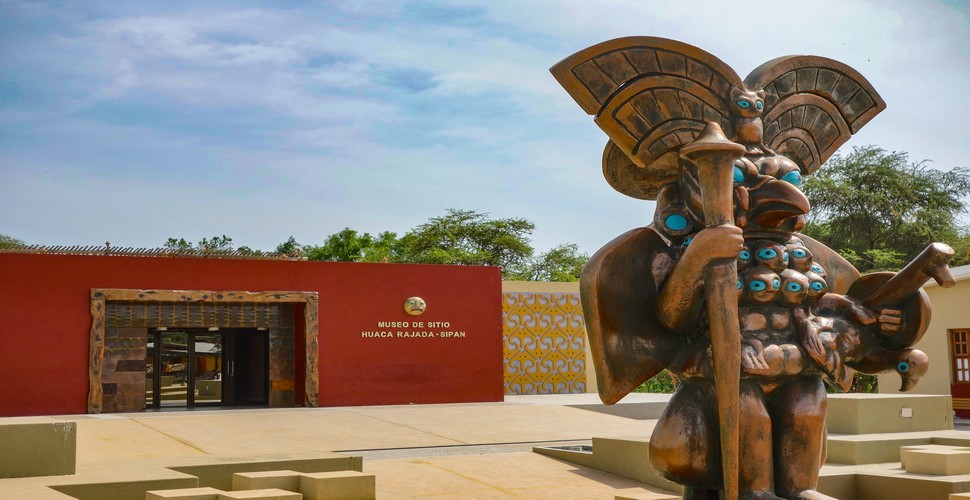
Huaca Rajada museum
Brüning National Archaeological Museum
Hans Heinrich Brüning (1848-1928), who was fascinated by archaeology, came to Perú in 1875 with the dream of dusting off the past. Befriending the locals, he studied the native language and even published a dictionary. Thanks to his passion for Peruvian culture, during the fifty years that he was in Lambayeque, he bought and collected a number of ceramics and in 1916 he was able to open the First Regional Museum of Perú, which five years later became the Brüning National Archaeological Museum. A collection of 1,400 archaeological pieces from the Vicús, Lambayeque, Mochica, Chavín, Chimú, and Inca cultures are exhibited.
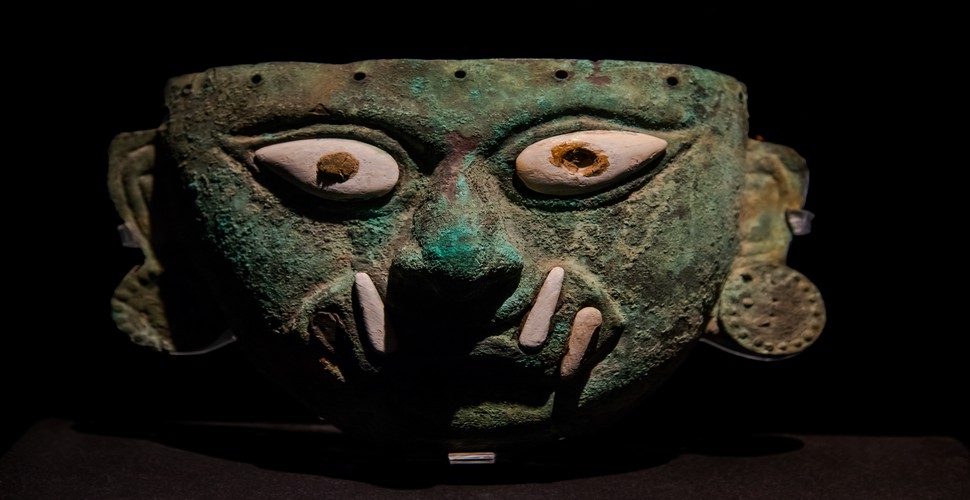
Bronze Moche mask - Ai Apaec
The next stop as you head to Trujillo is El Brujo which can be found in the Chicama Valley, about 60km from Trujillo. A number of different civilisations developed in the Chicama Valley region since the pre-ceramic period, and at least one of the three temples here, Huaca Prieta, is about 5,000 years old. The Huaca Prieta civilization inhabited the area from around 3500-2200 B.C.
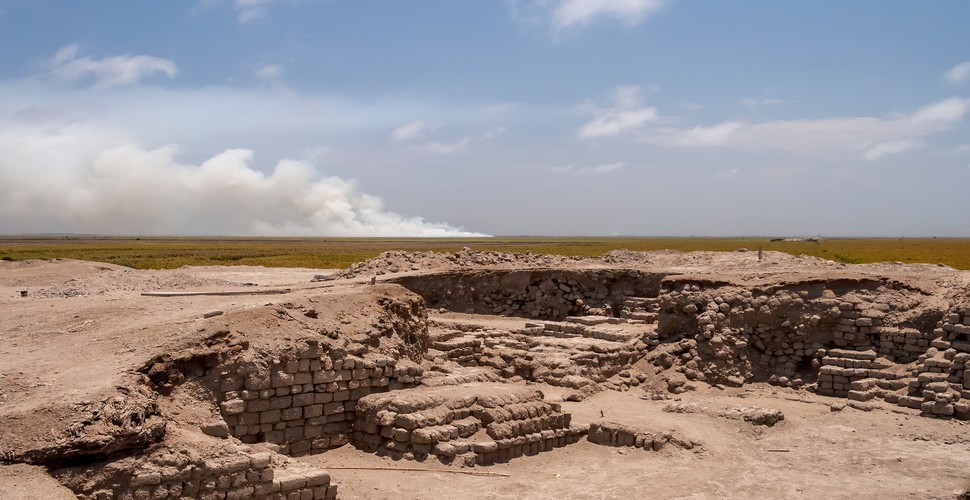
El Brujo archaeological complex
The main temple of interest at El Brujo is Huaca Cao, a flattened pyramid with impressive multicoloured murals, unrivalled in all of Peru. They depict figures of warriors, priests, and sacrificial victims. The site is thought to be the resting place of a priestess or even ruler of the Moche empire due to the precious offerings found at the burial site. Nearby, Huaca Cortada has some cool and menacing figures in high relief brandishing a knife in one hand and a recently decapitated head in the other.
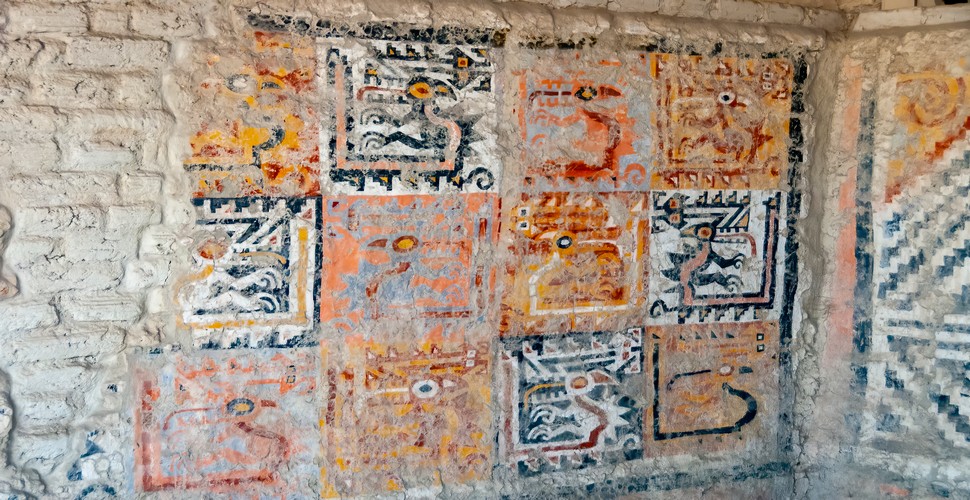
Magdelena del Cao
This full day tour of the Moche route offers excellent insight into the magnificent ancient culture of the Moche and should be considered on any trip heading to the north of Peru.
 Aventure
Aventure
 Cultural
Cultural
 Gastronomy
Gastronomy
 Wellness
Wellness
 Local Living
Local Living
 Luxury
Luxury







